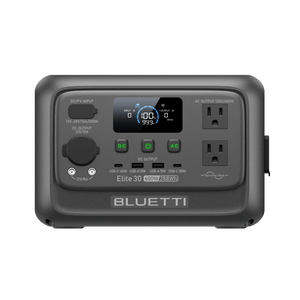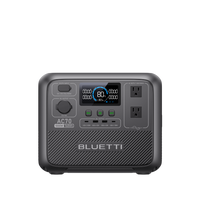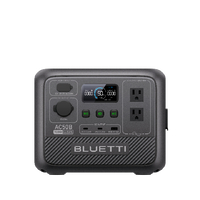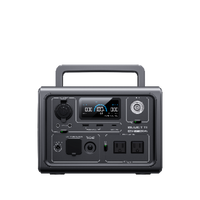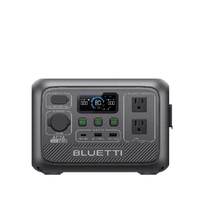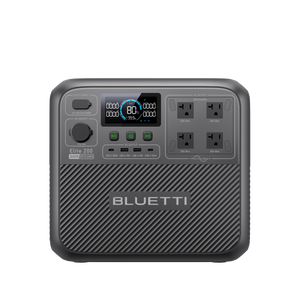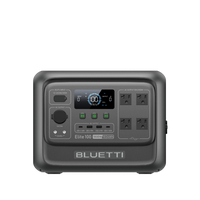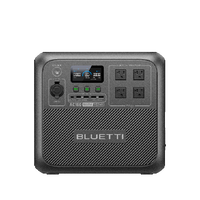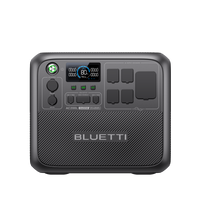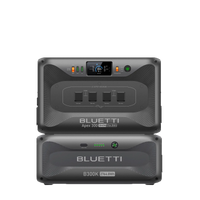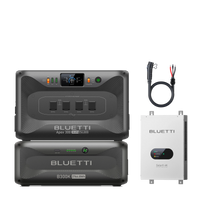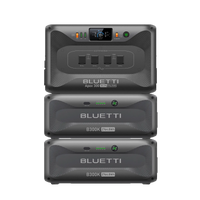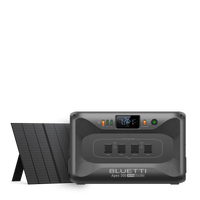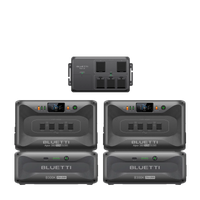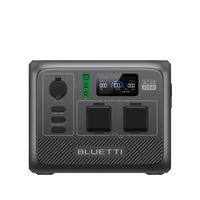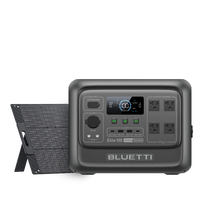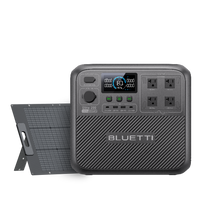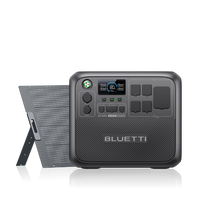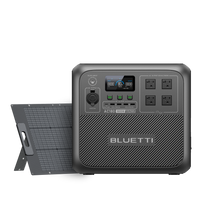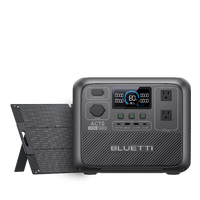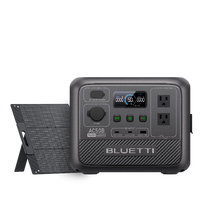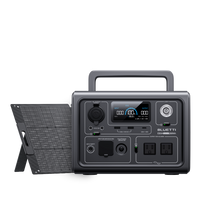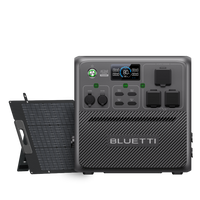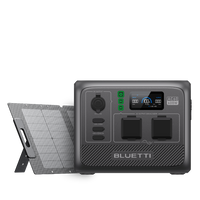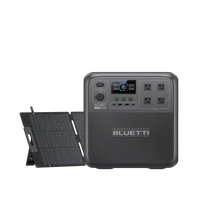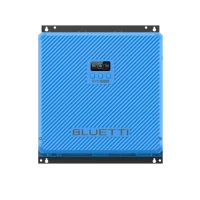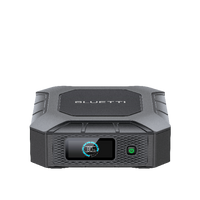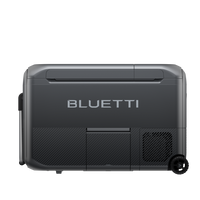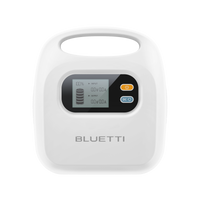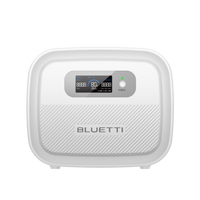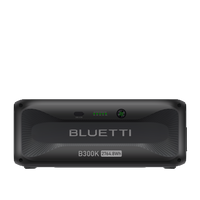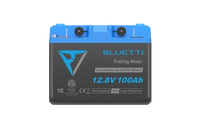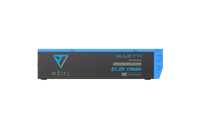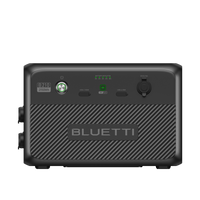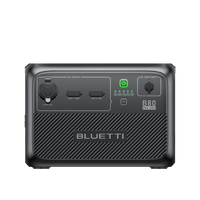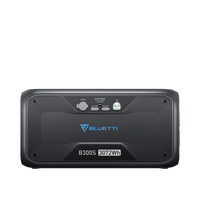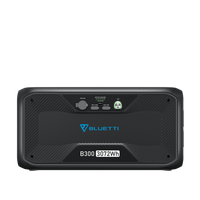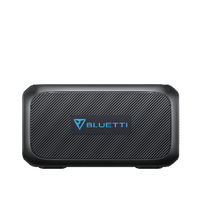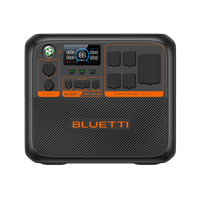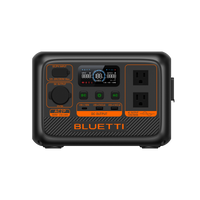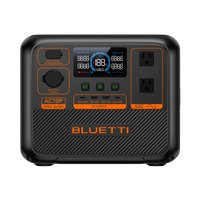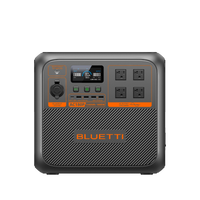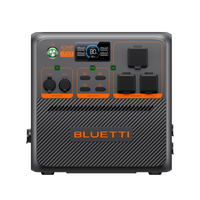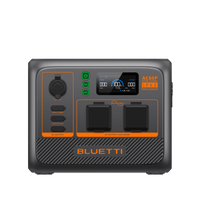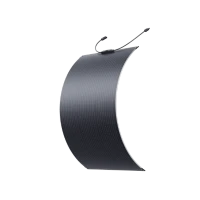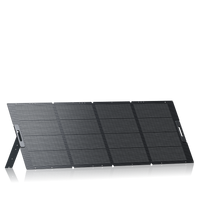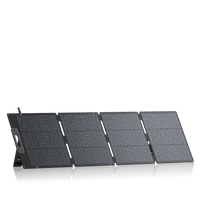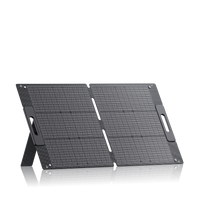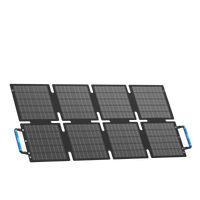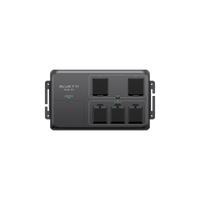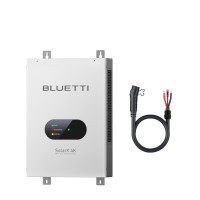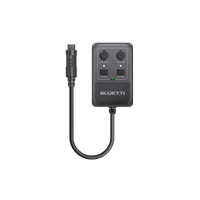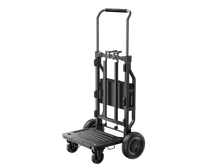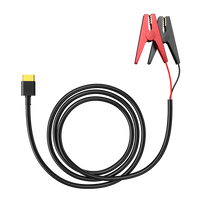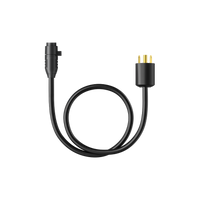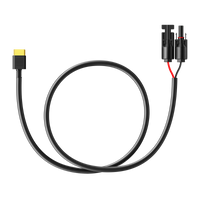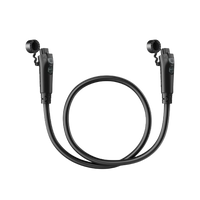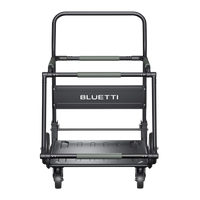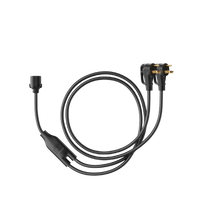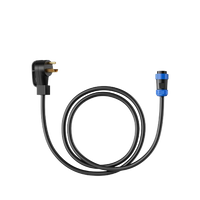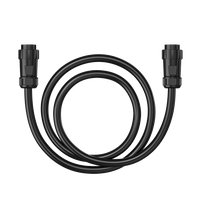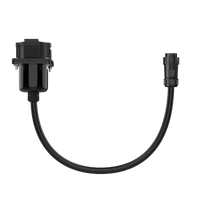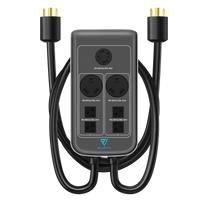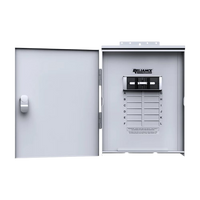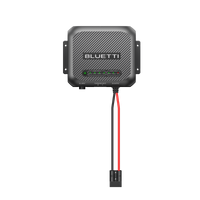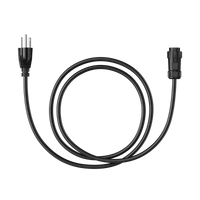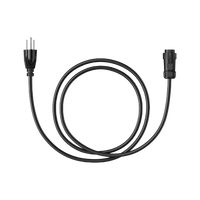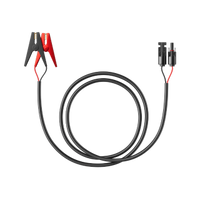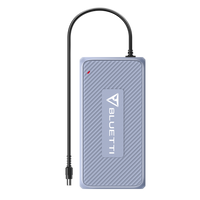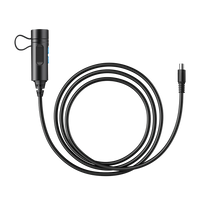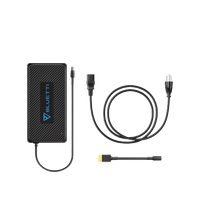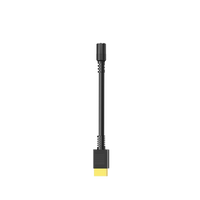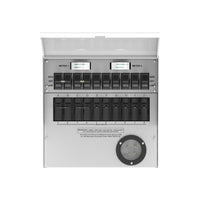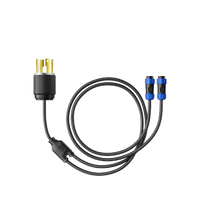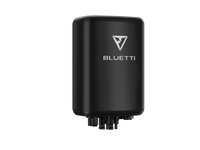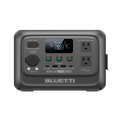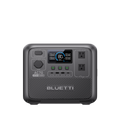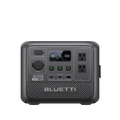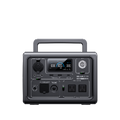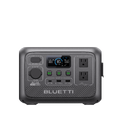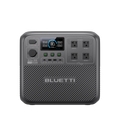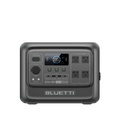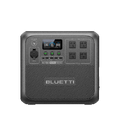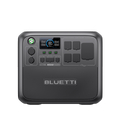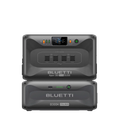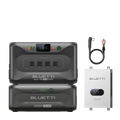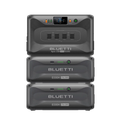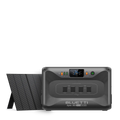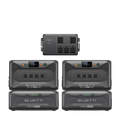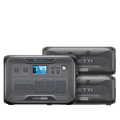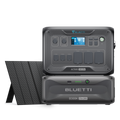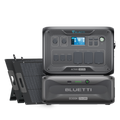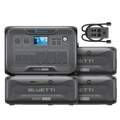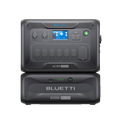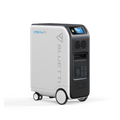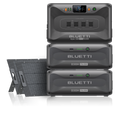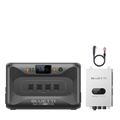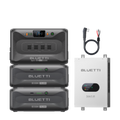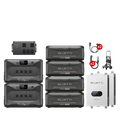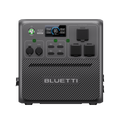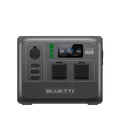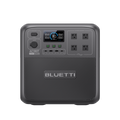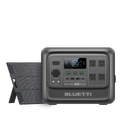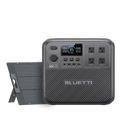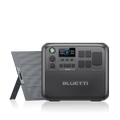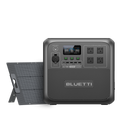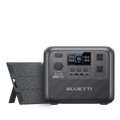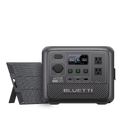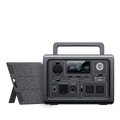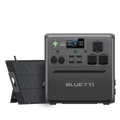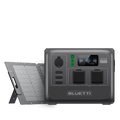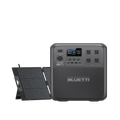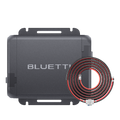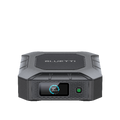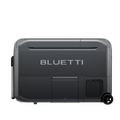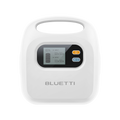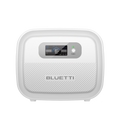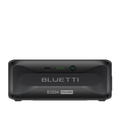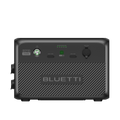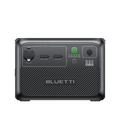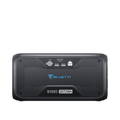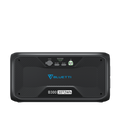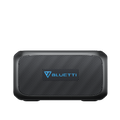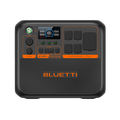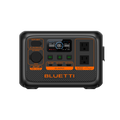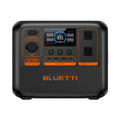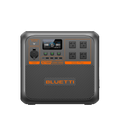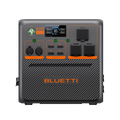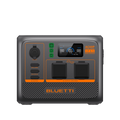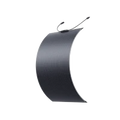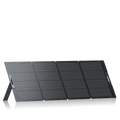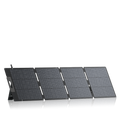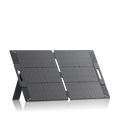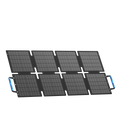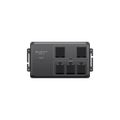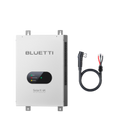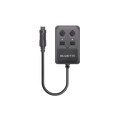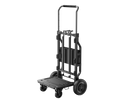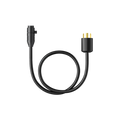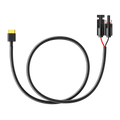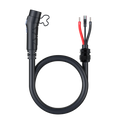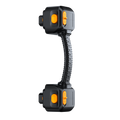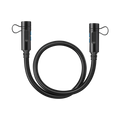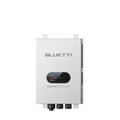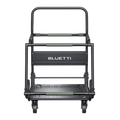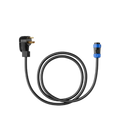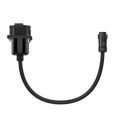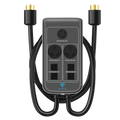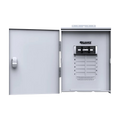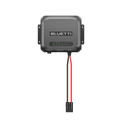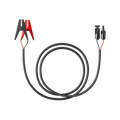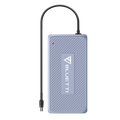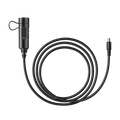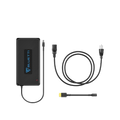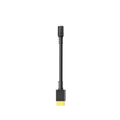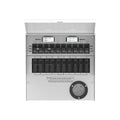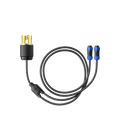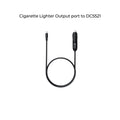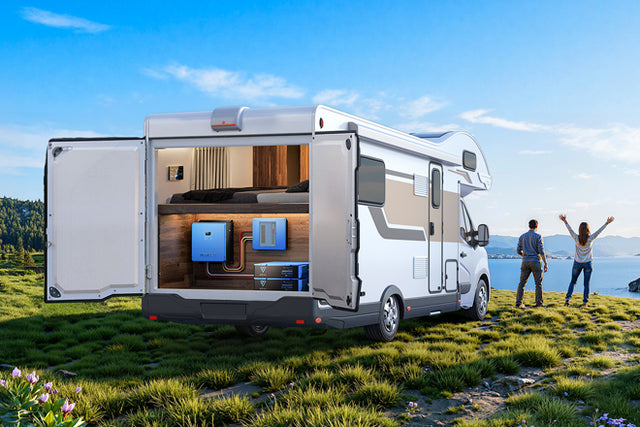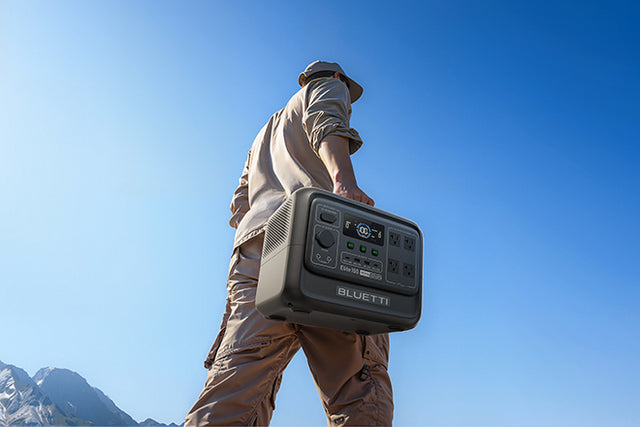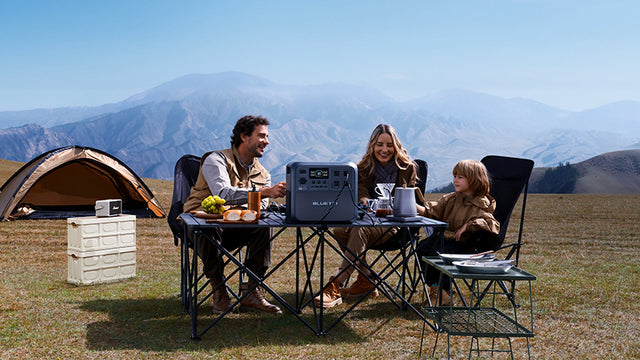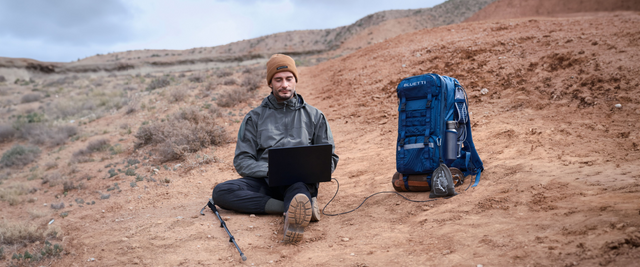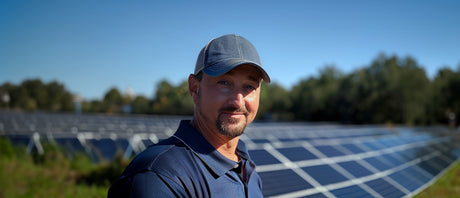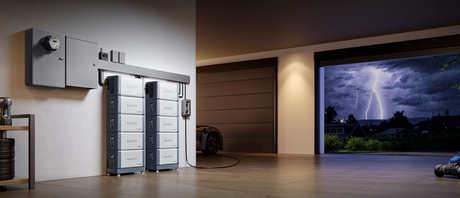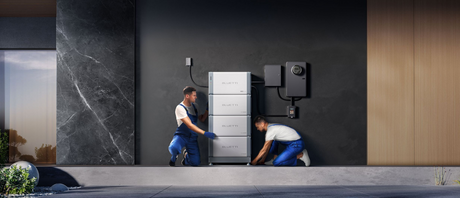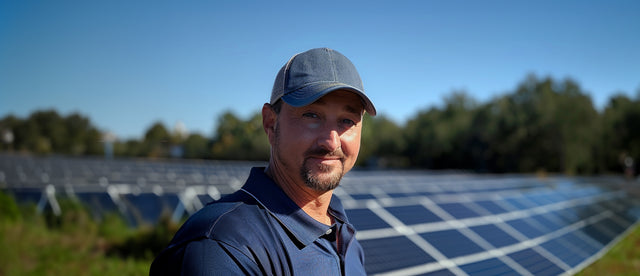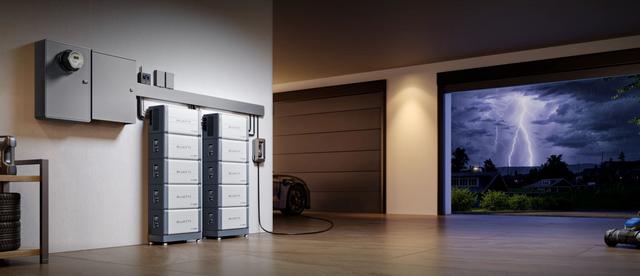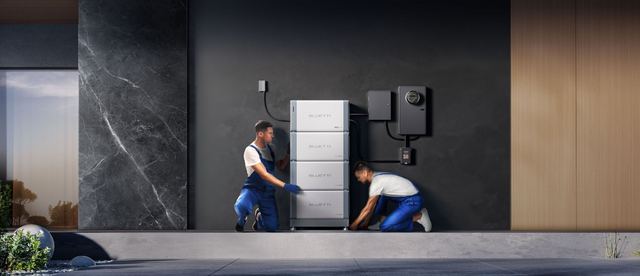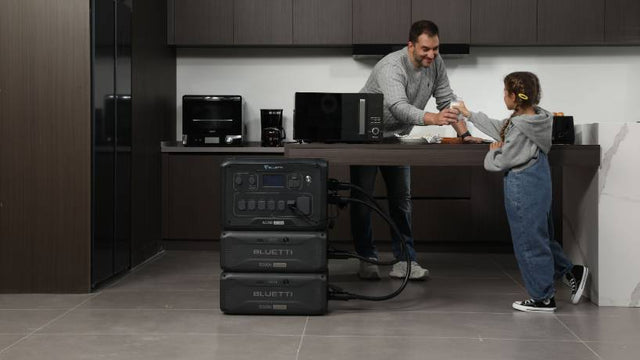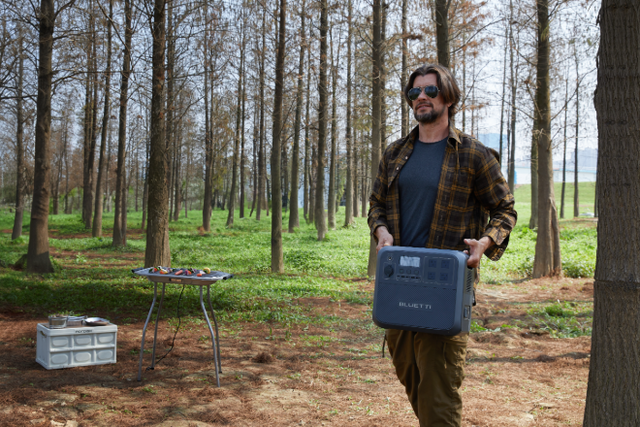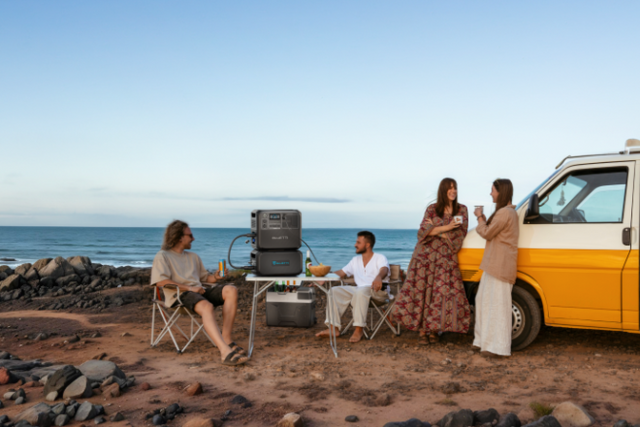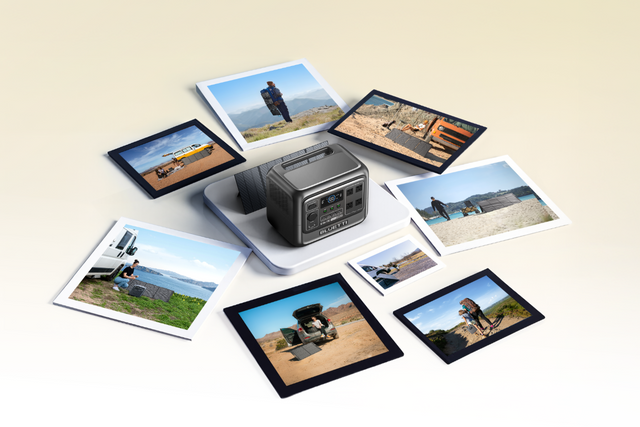Your cart is empty
Shop our productsToday, a variety of battery options are available for solar systems. However, back in 1883, Charles Fritts created an early solar cell using selenium and gold, a precursor to modern solar panels, though with very low efficiency. Nobody knew that these systems would be this successful in the future.
Installing a 1,000W solar panel system is a smart choice for sustainable energy. This article will explain everything about 1,000-watt solar panel systems, what they are, how they work, and how many batteries are needed for them.
The Basics of 1,000-watt Solar Systems

A 1,000-watt solar system is the most popular photovoltaic system. It is capable of generating one kilowatt of electrical power under standard conditions, which typically include:
- 1,000W/m2 of solar irradiance (full solar noon sunshine)
- A standard ambient temperature of 25°C.
- A sea level air mass equal to 1.5.
Now, if you are wondering, "Are there any 1000-watt solar panels?" the answer is not yet. Individual solar panels typically range from 300W to 600W, with high-efficiency models exceeding 500W.
In order to obtain 1,000W or 1kW of renewable solar energy, you will need 2–5 panels, depending on their wattage. For example, if each photovoltaic solar panel is 200W, which will add up to 1,000 watts with five pieces. Or two PV panels will be needed with 500 watts each.
Although 1,000W is insufficient to cover a large home's annual electricity consumption, it can produce an abundant amount of energy for most home appliances, job sites, workshops, RVs, or caravans.
Calculating Your Energy Needs for A 1,000-Watt Solar System
Calculating your energy needs for a 1,000-watt solar system requires careful consideration of various factors. Here's a detailed look at these factors.
Daily Energy Consumption
First, you will need to quantify the daily energy consumption of the appliances you want to run using a 1,000-watt solar system. Check out how much power your appliances require and for how long they will be operated.
Use the following formula to calculate the daily energy consumption of a device.
E = P × t
Where E is energy measured in kWh, P is the power in kilowatts, and t is the duration over which the power was consumed.
For example, suppose your television is rated at 200 watts (0.2 kWh), and you have it on for 3 hours a day. In this case, its daily consumption would be:
E = 0.2kW × 3h = 0.6kWh
Add the calculated daily energy requirements of all the appliances that the solar system will power. This information will give you an accurate assessment of your energy needs.
Panel Efficiency
Photovoltaic solar panels vary in output based on their efficiency and size. In technical terms, the panel efficiency can be factored in as follows:
η = (P / (A ×1000)) × 100%
Here, η is panel yield or efficiency, P is system power in watts, A is system area in square meters, and 1000 W/m² is the standard irradiance. As for the area, you need to see the product dimensions, which are the product of length and width. Length and width are usually given in centimeters, so remember to convert them to meters before calculating the system efficiency.
Here, it is important to note that panel efficiency is a matter of area rather than power. A 10% efficient panel and a 20% efficient panel can generate the same amount of electricity. However, a 20% efficient panel will occupy half the total size of a 10% efficient panel.
Take, for example, a 350-watt solar panel whose rated power is 350 watts and the area is 1.68 sq. meters (1.4m × 1.2m). Its efficiency would be:
η = (350W/(1.68sq.m × 1000 W/m² )) × 100% = 20%
This is a rough estimate of the panel efficiency as a whole. Expect it to be lower, as normal losses may occur as the electricity flows through the panel and wires. For a higher efficiency panel with a similar area, the power will be greater than 350 watts.
Panel efficiency is a critical parameter if your roof space is limited for a 1,000W solar generator.
Peak Sunlight Hours
The sun won't shine on your solar panel system for 24 hours a day – that doesn't mean you cannot utilize solar energy around the clock.
Instead, it means solar power won't be generated outside of daylight hours. Peak sunlight hours also vary by time of year and by more specific geospatial information.
To determine the actual energy output of your 1,000-watt solar system, you need to know the hours of peak sunlight in your location.
For instance, if you live in a location that gets 6 hours of sunlight in summer, your 1,000-watt solar system can produce ~4,800–5,400Wh per day in summer, accounting for efficiency losses (e.g., 80–90% of 6,000Wh).
Battery Sizing for A 1,000W Solar Panel System

Solar panels harness power from the sun, but if you want to use them at night or on less sunny or cloudy days, batteries will be required to run them.
Now, your next question may be, "How many batteries are required for a 1,000W solar panel system?" Well, it depends.
A 12V 200Ah lead-acid battery (1,200Wh usable at 50% DOD) can power a 1,000W load for ~1.1–1.2 hours, assuming 90–95% inverter efficiency. For typical household loads (e.g., 300–500W), the runtime will be longer. Larger batteries have the capacity to sustain such systems for longer durations.
If your solar panel has the appropriate voltage, even a 24V battery can be utilized. If fully discharged, a 12V/300Ah lead battery can supply 3,600 watt-hours, but only 1,800 watt-hours would be usable because of a 50% depth of discharge (DOD). DOD refers to how much energy can be tapped into and out of the battery in a given cycle.
The wattage of a battery can be calculated by multiplying the amperage by the voltage. In mathematical terms, it is expressed as
W = A × V
Here, W is wattage, A is amperage, and V is volts. Below are the watt-hour equivalents for different 12V lead batteries.
|
12V Lead Battery |
Watt-hour Equivalent |
Usable Watt-hours (50% DOD) |
|
150 Ah |
1,800 W |
900 Wh |
|
200 Ah |
2,400 W |
1,200 Wh |
|
250 Ah |
3,000 W |
1,500 Wh |
|
300 Ah |
3,600 W |
1,800 Wh |
|
350 Ah |
4,200 W |
2,100 Wh |
|
400 Ah |
4,800 W |
2,400 Wh |
|
450 Ah |
5,400 W |
2,700 Wh |
|
500 Ah |
6,000 W |
3,000 Wh |
|
600 Ah |
7,200 W |
3,600 Wh |
In a solar system, all these batteries can supply 1,000 watts – the difference lies just in the battery runtime. The formula for battery runtime is:
Runtime = Usable Watt-hours ÷ Load Watts
As we want to calculate battery runtime for a 1,000W load, the formula in our case will be:
Runtime = Usable Watt-hours ÷ 1,000W
For example, a 350Ah lead battery with 50% DOD provides 2,100 usable watt-hours, which is a good two hours and six minutes.
Runtime = 2,100Wh ÷ 1,000W = 2.1h
Conversely, if four 350Ah lead batteries (that become 1,400Ah or 16,800Wh) are utilized, the battery would be able to carry a 1,000-watt load for at least 8 hours, with 8,400 watt-hours available.
The above discussion was about lead batteries. Now, we will talk about lithium-iron-phosphate (LFP) batteries. LFP batteries offer a high depth of discharge (80–90%), allowing a 12V 350Ah LFP battery to provide ~3,360–3,780Wh usable, running a 1,000W load for ~3.4–3.8 hours.
This explains how to determine the number of batteries needed for a 1,000W solar system.
Types of Batteries for A 1,000-Watt Solar System
Lead-acid Batteries

These are the oldest type of solar batteries and have a long history as renewable energy resources since they were developed alongside them.
Lead-acid batteries come in two types. Sealed lead-acid batteries are sealed at the top; they don't release toxic gas while charging under normal conditions. Flooded lead-acid batteries are like the bigger version of traditional car batteries and vent gases to the atmosphere while charging.
When compared to other storage options, lead-acid batteries have a shorter lifespan. Their depth of discharge (DOD) is also lower. They also require maintenance. Because of these drawbacks, lead-acid batteries are the cheapest option for a 1,000-watt solar panel system.
LFP Batteries

LFP batteries are the relatively new kid on the block compared to the long history of lead-acid batteries. However, these batteries are popular among residential solar owners. There are four reasons for this:
- Longer lifespan.
- Minimal maintenance.
- Extremely safe.
- Better discharge and charge efficiency.
- Lightweight and portable.
In addition, LFP batteries are environmentally sustainable and non-toxic; they don't use heavy toxic metals like cobalt and nickel. That being the case, LFP batteries are definitely recommended for your 1,000-watt solar panel system. While they may be expensive, they are worth the price.
Top Battery Recommendations from BLUETTI
With many battery backup options available, finding the right one can be challenging. Here are two top BLUETTI solutions for your 1,000W solar system.
Apex 300 Versatile Power Station

The BLUETTI Apex 300 offers an outstanding capacity of 2,764.8Wh, which can be further expanded up to 58kWh with additional battery packs. This supports all the 120V/240V appliances. To offer BLUETTI's trademark safety and reliability, the unit features an automotive-grade LiFePO₄ battery with over 6,000 life cycles and comes with a 5-year warranty.
This battery backup is perfectly compatible with BLUETTI's solar panels and, due to being IP65 water-resistant, it can be installed both outdoors and indoors. The BLUETTI Apex 300 (2,764.8Wh) can store enough energy to run a 1,000W load for ~2.5–2.6 hours or a typical 3kWh/day household load overnight. Pair it with 5× 200W PV panels to recharge in ~6–7 hours of sunlight.
Indeed, the BLUETTI Apex 300 is a way to achieve energy independence. It not only keeps your devices working smoothly during power outages and long blackouts, but it also stores energy that can be used flexibly to optimize your home's power consumption.
The unit's flexible design makes it perfect to get a place in your home, as its efficiency can be altered according to your increasing energy needs. The backup has everything to ensure that you never run out of power.
BLUETTI AC500+B300K | Home Battery Backup

The BLUETTI AC500+B300K | Home Battery Backup offers an optimum power capacity of 5,000W with a surge of up to 10,000W. The storage capacity can be expanded from 2,764.8Wh up to 16,588.8Wh with additional battery modules.
It also features a LiFePO₄ Battery with over 6,000 life cycles, ensuring more than a decade of reliable performance. For easy handling, the unit is integrated with a smart app (WiFi + Bluetooth) and can be conveniently operated from your mobile phone. Not only this, but to make its operation more efficient, it supports multiple charging methods, including AC, solar, car, generator, other batteries, and dual AC/DC input—with up to 8,000W ultra-fast charging.
The system can connect with up to 6× B300K expansion batteries (each 2,764.8Wh), giving you the flexibility to manage power output capacity according to your needs. But the efficiency of the BLUETTI AC500+B300K does not end here. It also provides 16 versatile output ports, ensuring that 99% of your home devices run perfectly and smoothly.
While gas generators of the same capacity come with downsides—from noise to pollution to ongoing fuel costs—this unit requires only a one-time investment. Thanks to its portability, eco-friendliness, and zero emissions, it can be your best companion at home and for all your on-road or off-grid adventures.
Other Key Components of A 1,000W Solar System
Evidently, there are other things than just solar panels that go into generating solar energy. For an off-grid 1,000-watt solar panel system, a charge controller and an inverter will be required in addition to batteries.
Inverter
An inverter is a piece of solar equipment that converts the direct current generated by PV panels into usable energy (alternating current). The inverter efficiency relies on the load of the inverter. Pure sine wave inverters (90–95% efficient) provide stable power for sensitive devices, while modified sine wave inverters (85–90% efficient) are less suitable for modern appliances.
Charge Controller
A charge controller regulates energy flow from solar panels to the battery. It governs the voltage and current supplied by the inverter or generator. It will protect your battery from over-charging and over-discharging, and is commonly referred to as a Battery Charge Controller (BCC).
Final Thoughts
We hope this article was helpful in explaining both what a 1,000-watt solar panel system is and how many batteries are required for it. And we also recommended the two best battery backups for your 1,000-watt solar system in the article; you can choose one based on your needs.
FAQs
How many batteries are needed for a 1,000W solar panel system?
The exact number depends on your battery size and backup hours. For example, a 1,000W system with 12V 200Ah batteries usually needs 2–4 batteries to run efficiently.
What size battery is best for a 1000W solar setup?
A 12V 200Ah or 24V 100Ah deep-cycle LiFePO₄ battery is ideal, as it provides enough storage, better efficiency, and a longer lifespan than lead-acid batteries.
How long will a 1000W solar panel run on batteries?
1000W solar panel's output doesn't directly determine battery runtime; rather, it's the size of your battery bank and the power draw of your devices that dictate how long it can run. For example, a 12V, 200Ah battery can power a 1000W load for about two hours, while a 48V, 100Ah battery offers around 5kWh of storage, potentially lasting much longer depending on the load. Higher-capacity batteries extend backup time.
